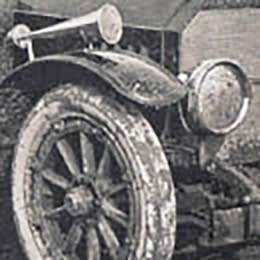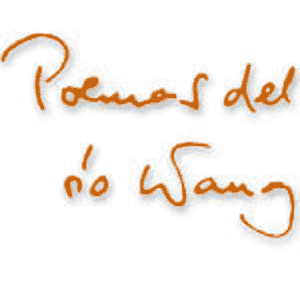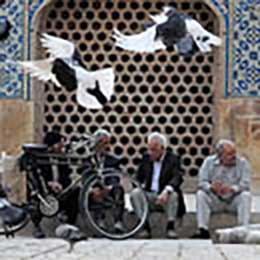Today is the anniversary of the death of Erasmus of Rotterdam. After the death of Thomas More who affected him so much, Erasmus returned from Freiburg to Basel, the city he passionately loved and hated: to Basel where in 1521 the printer Frobenius had placed a mansion at his disposal so he could comfortably work; to Basel from where in 1529 the riots and the ultimate takeover of the Protestants forced him to leave. He returned in 1535 just for a short time before dying on a July 12, as today, in 1536.
In his fight against superstition, Erasmus denounced the supposed preventive or apotropaic virtues of images. In The Praise of Folly he specially mentions that of Saint Christopher as an example for them. According to the tradition widespread in the contemporary Europe, just the sight of a statue or of a painting of the saint was able to preserve someone for the rest of the day from sudden death or, as they called it, “bad death”. Erasmus made fun of this belief:
“…These stories serve not only to pass away time but bring profit, especially to mass priests and pardoners. And next to these are they that have gotten a foolish but pleasant persuasion that if they can but see a wooden or painted Polypheme Christopher, they shall not die that day…” (The Praise of Folly, 40)
In the abundant iconography of Saint Christopher, the most curious portrait – certainly of Eastern Christian origins – is the one representing him with a dog’s head. As Louis Réau informs us in the Iconographie de l’art chrétien, this image is rooted in the 6th-century gnostic Acts of St. Bartholomew, but it might also have a certain contamination with the Egyptian god Anubis

The feast of my neighborhood was celebrated in this weekend, and precisely under the protection of Saint Christopher.
 The Calatrava neighborhood of Palma is trying to revive its better times, as were the late 70s and early 80s, when an air of radical freedom, cultural and intellectual variety and a truly joyful street life permeated this corner as intensively as few other places in Spain. Just some months ago Jaume Franquesa published his book Sa Calatrava mon amour. Etnografia d'un barri atrapat en la geografia del capital (Calatrava, my love. Ethnography in a neighborhood trapped in the geography of the capital), a deep X-ray survey of the changes brought about by speculation and the real estate transactions in this ancient heart of Palma. An intelligent book, because the author knew how to get inside the houses, talk to families, seek testimonies from neighbors, reveal their feelings and unravel their contradictions, avoiding any temptation to simplify matters. The people appearing on these pages have lived a complete transformation of their neighborhood, have fought for their ideas, have had discussions among themselves and with the political and economic powers, but, above all, they managed to keep a real tradition of the fiesta and street life alive for many years. Today the neighborhood is quiet and somewhat sad.
The Calatrava neighborhood of Palma is trying to revive its better times, as were the late 70s and early 80s, when an air of radical freedom, cultural and intellectual variety and a truly joyful street life permeated this corner as intensively as few other places in Spain. Just some months ago Jaume Franquesa published his book Sa Calatrava mon amour. Etnografia d'un barri atrapat en la geografia del capital (Calatrava, my love. Ethnography in a neighborhood trapped in the geography of the capital), a deep X-ray survey of the changes brought about by speculation and the real estate transactions in this ancient heart of Palma. An intelligent book, because the author knew how to get inside the houses, talk to families, seek testimonies from neighbors, reveal their feelings and unravel their contradictions, avoiding any temptation to simplify matters. The people appearing on these pages have lived a complete transformation of their neighborhood, have fought for their ideas, have had discussions among themselves and with the political and economic powers, but, above all, they managed to keep a real tradition of the fiesta and street life alive for many years. Today the neighborhood is quiet and somewhat sad.
 One of the traditional rituals of the feast of Saint Christopher is to place his relic, which had stopped a plague, for veneration outside the front door of the church of Santa Fe, at the entrance of the neighborhood.
One of the traditional rituals of the feast of Saint Christopher is to place his relic, which had stopped a plague, for veneration outside the front door of the church of Santa Fe, at the entrance of the neighborhood.


Almost all cars – there are not many – stop for receiving the blessing and a print representing Saint Christopher and to leave a small donation in return.


Inside the church, San Cristobalón, “Giant Saint Christopher”. He is so gigantic indeed that he uses a palm tree for support. Jesus, to prove that it was Him whom he had taken across the river, told him to nail down his staff which was immediately transformed into a palm tree laden with dates.



Erasmus would probably passionately love and hate La Calatrava.

In his fight against superstition, Erasmus denounced the supposed preventive or apotropaic virtues of images. In The Praise of Folly he specially mentions that of Saint Christopher as an example for them. According to the tradition widespread in the contemporary Europe, just the sight of a statue or of a painting of the saint was able to preserve someone for the rest of the day from sudden death or, as they called it, “bad death”. Erasmus made fun of this belief:
“…These stories serve not only to pass away time but bring profit, especially to mass priests and pardoners. And next to these are they that have gotten a foolish but pleasant persuasion that if they can but see a wooden or painted Polypheme Christopher, they shall not die that day…” (The Praise of Folly, 40)
In the abundant iconography of Saint Christopher, the most curious portrait – certainly of Eastern Christian origins – is the one representing him with a dog’s head. As Louis Réau informs us in the Iconographie de l’art chrétien, this image is rooted in the 6th-century gnostic Acts of St. Bartholomew, but it might also have a certain contamination with the Egyptian god Anubis

The feast of my neighborhood was celebrated in this weekend, and precisely under the protection of Saint Christopher.
 The Calatrava neighborhood of Palma is trying to revive its better times, as were the late 70s and early 80s, when an air of radical freedom, cultural and intellectual variety and a truly joyful street life permeated this corner as intensively as few other places in Spain. Just some months ago Jaume Franquesa published his book Sa Calatrava mon amour. Etnografia d'un barri atrapat en la geografia del capital (Calatrava, my love. Ethnography in a neighborhood trapped in the geography of the capital), a deep X-ray survey of the changes brought about by speculation and the real estate transactions in this ancient heart of Palma. An intelligent book, because the author knew how to get inside the houses, talk to families, seek testimonies from neighbors, reveal their feelings and unravel their contradictions, avoiding any temptation to simplify matters. The people appearing on these pages have lived a complete transformation of their neighborhood, have fought for their ideas, have had discussions among themselves and with the political and economic powers, but, above all, they managed to keep a real tradition of the fiesta and street life alive for many years. Today the neighborhood is quiet and somewhat sad.
The Calatrava neighborhood of Palma is trying to revive its better times, as were the late 70s and early 80s, when an air of radical freedom, cultural and intellectual variety and a truly joyful street life permeated this corner as intensively as few other places in Spain. Just some months ago Jaume Franquesa published his book Sa Calatrava mon amour. Etnografia d'un barri atrapat en la geografia del capital (Calatrava, my love. Ethnography in a neighborhood trapped in the geography of the capital), a deep X-ray survey of the changes brought about by speculation and the real estate transactions in this ancient heart of Palma. An intelligent book, because the author knew how to get inside the houses, talk to families, seek testimonies from neighbors, reveal their feelings and unravel their contradictions, avoiding any temptation to simplify matters. The people appearing on these pages have lived a complete transformation of their neighborhood, have fought for their ideas, have had discussions among themselves and with the political and economic powers, but, above all, they managed to keep a real tradition of the fiesta and street life alive for many years. Today the neighborhood is quiet and somewhat sad.  One of the traditional rituals of the feast of Saint Christopher is to place his relic, which had stopped a plague, for veneration outside the front door of the church of Santa Fe, at the entrance of the neighborhood.
One of the traditional rituals of the feast of Saint Christopher is to place his relic, which had stopped a plague, for veneration outside the front door of the church of Santa Fe, at the entrance of the neighborhood.

Almost all cars – there are not many – stop for receiving the blessing and a print representing Saint Christopher and to leave a small donation in return.


Inside the church, San Cristobalón, “Giant Saint Christopher”. He is so gigantic indeed that he uses a palm tree for support. Jesus, to prove that it was Him whom he had taken across the river, told him to nail down his staff which was immediately transformed into a palm tree laden with dates.



Erasmus would probably passionately love and hate La Calatrava.


























































































Add comment